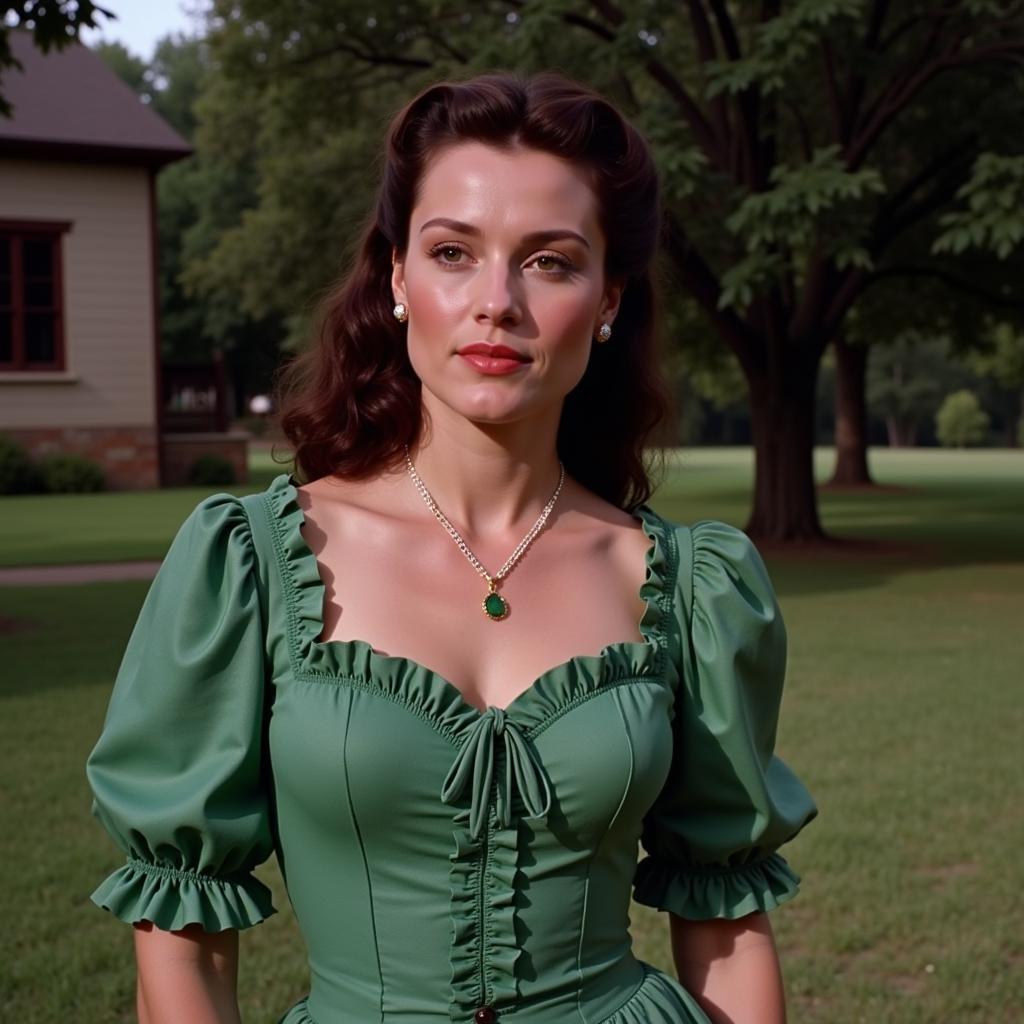Gone with the wind in color? Yes, indeed! From its very first release in 1939, Gone With the Wind was a vibrant spectacle of Technicolor, capturing the grandeur of the antebellum South and the fiery spirit of Scarlett O’Hara. This iconic film wasn’t just a story of love and war; it was a landmark achievement in filmmaking, showcasing the power of color to enhance storytelling and immerse audiences in a bygone era.
The Technicolor Revolution and Gone With the Wind’s Colorful Debut
Before Gone With the Wind, color in film was a rarity, often associated with fantasy or musicals. However, Technicolor’s three-strip process, perfected in the mid-1930s, offered a more realistic and vibrant palette. This made it the perfect choice for Gone With the Wind, a film striving for historical accuracy and emotional depth. The producers understood the impact color would have on bringing the story to life, emphasizing the lavish costumes, the sweeping landscapes, and the dramatic emotions of the characters. Was Gone with the Wind filmed in black and white? Absolutely not. It embraced the dawn of a new cinematic era.
 Gone With the Wind Technicolor Dress
Gone With the Wind Technicolor Dress
Why Color Was Crucial to Gone With the Wind’s Narrative
The use of color in Gone With the Wind wasn’t merely aesthetic; it played a vital role in enhancing the narrative. The vibrant reds and oranges of the burning Atlanta skyline underscored the devastation of war. The lush greens of Tara, Scarlett’s beloved plantation, symbolized hope and resilience. And the rich hues of the costumes reflected the social status and personalities of the characters. Imagine Scarlett’s famous green dress, made from curtains, symbolizing her resourcefulness and defiance. Without color, these powerful visual metaphors would have been lost.
The Challenges and Triumphs of Filming in Technicolor
Filming in Technicolor in the 1930s presented significant challenges. The cameras were bulky, the lighting required careful calibration, and the process was expensive. However, the filmmakers of Gone With the Wind embraced these challenges, pushing the boundaries of what was technically possible. The result was a visually stunning masterpiece that set a new standard for cinematic storytelling.
Was Gone With the Wind Always Intended to be in Color?
Yes, from the outset, producer David O. Selznick envisioned Gone With the Wind in color. He understood the power of Technicolor to bring Margaret Mitchell’s epic novel to life on the big screen. The decision to use color, though costly and complex, proved crucial to the film’s lasting impact and iconic status.
The Legacy of Gone With the Wind’s Technicolor Brilliance
Gone With the Wind remains a testament to the power of Technicolor. It was one of the first major Hollywood films to fully embrace the technology, and its success helped pave the way for the widespread adoption of color in cinema. Even today, the film’s vibrant hues continue to captivate audiences, reminding us of the enduring magic of classic Hollywood filmmaking.
“Gone With the Wind’s use of color wasn’t just about making a pretty picture,” says Dr. Eleanor Vance, film historian. “It was about using color to tell a story, to evoke emotions, and to create a truly immersive experience for the audience.”
“Technicolor elevated Gone With the Wind from a historical drama to a visual masterpiece,” adds renowned film critic, James Caldwell. “The vibrant colors brought the story to life in a way that black and white simply couldn’t have achieved.”
Conclusion
Was Gone With the Wind in color originally? Absolutely. Its vibrant Technicolor palette was integral to the film’s storytelling, capturing the grandeur of the Old South and the emotional depth of its characters. Gone With the Wind’s embrace of color cemented its place as a cinematic landmark and continues to inspire filmmakers today.
FAQ
- Was Gone With the Wind ever released in black and white? No, it was always released in color.
- What type of color film was used for Gone With the Wind? Three-strip Technicolor.
- Why is the color in Gone With the Wind so vibrant? Due to the Technicolor process.
- Did the use of color add to the cost of making the film? Yes, significantly.
- Was Gone With the Wind one of the first films to use Technicolor? It was one of the first major Hollywood films to fully utilize the technology.
- How did the use of color impact the storytelling in Gone With the Wind? It enhanced the visual narrative and underscored the emotional depth of the story.
- Is Gone With the Wind still considered a visually impressive film today? Yes, its Technicolor brilliance continues to captivate audiences.
Need support? Contact us at Phone Number: 0373298888, Email: [email protected] or visit our address: 86 Cau Giay, Hanoi. We have a 24/7 customer service team.
